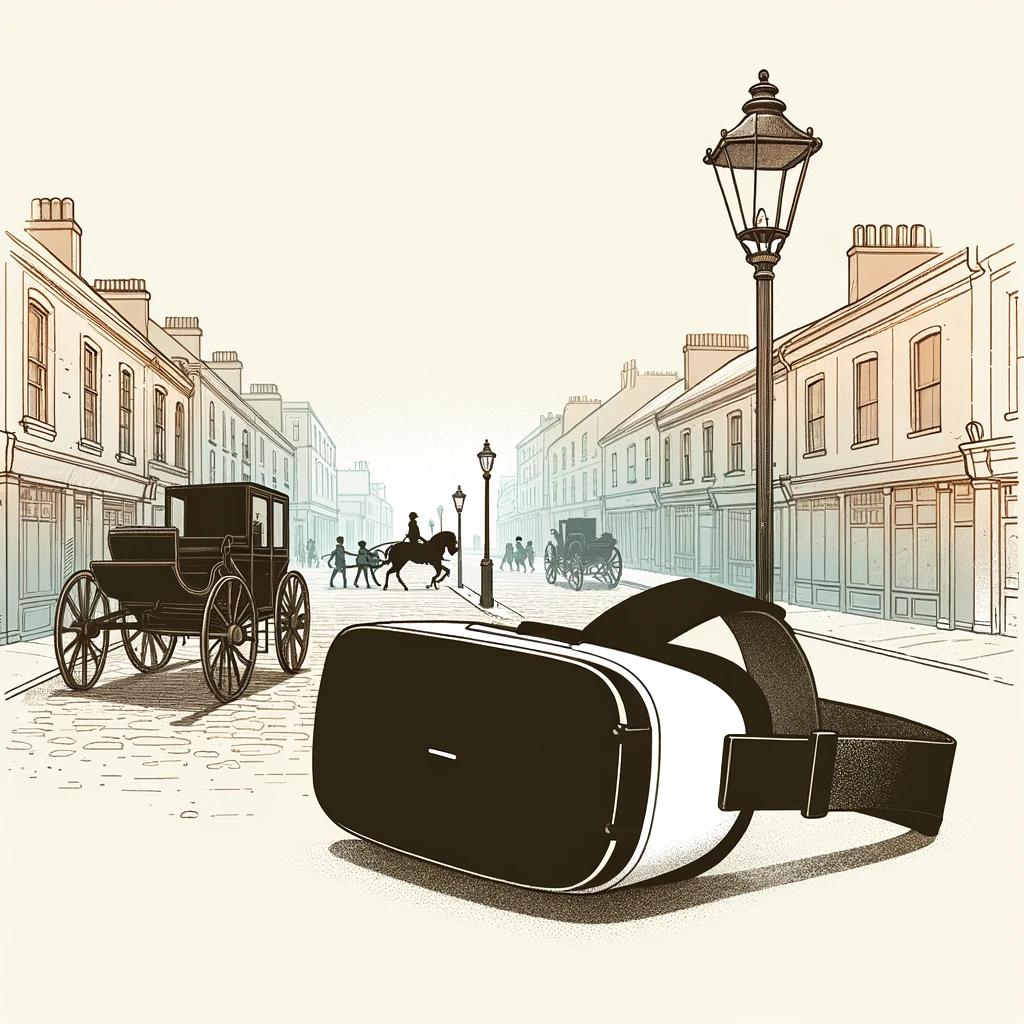
Informed by Immerzed
A Short History of Virtual Reality
Virtual Reality may seem like a concept that only came to light in the last few years. However, the foundations and concepts for it actually go much further back. Here, we present a brief overview of the history of virtual reality.
The Pioneers
VR headsets in the sense of modern wearables are indeed only a few decades old. However, the idea of perspective representation of images dates back much further. As early as 1788, the Irishman Robert Barker exhibited a panoramic image, which, when viewed from a platform in the middle, created a spatial impression. He called his creation "Panorama" (from Greek pan: "all" and horama: "view") and thus coined this term.
In 1833, Charles Wheatstone invented a device that allowed viewers to look at two slightly offset sections of the same image through two mirrors. This created a spatial impression. Wheatstone's stereoscope, as he named it, underwent numerous developments over time and remained popular until the 1950s. The most famous adaptation of the stereoscope from this time is the View-Master.
A significant milestone was the 1962 patenting of the Sensorama. This device was intended to make films experienceable using a stereoscope, movable seats, stereo sound, fans, and scent emitters. Due to its immersion and multimodality, its inventor, Morton Heilig, is often called the father of virtual reality.
First Head-mounted Displays
The first "real" VR headset was the 1968 Sword of Damocles by computer scientist Ivan Sutherland - named so because it had to be suspended from the ceiling due to its weight. This was the first time real monitors were used, and the device could recognize head movements. Although it only displayed a simple wireframe model, the technology was still impressive for its time.
The foundation was laid. From the 1980s, VR hardware became an increasingly common sight, not just headsets: In 1983, Thomas Zimmerman developed the first commercial data glove, enabling immersive control of computer programs via hand gestures. NASA developed its own headset called VIEW in 1985 for training and testing purposes.
In the late 80s and 90s, the technology also reached the gaming and consumer market. In 1987, VPL Research introduced the first commercial VR glasses, the EyePhone, and Mattel released the PowerGlove as an input device for Nintendo consoles in 1989. In the 90s, VR arcades became increasingly popular, and renowned console manufacturers released their own glasses, including Sega's Sega Scope 3D Glasses in 1993 and Nintendo's Virtual Boy in 1995. However, these devices often conveyed only 3D depth effects and not "real" VR.
Most of these projects ended as flops. The main reasons were the limited hardware performance and high prices of the time.
Virtual Reality in the Present
The big VR hype returned in 2012 with the introduction of the Oculus Rift. The company raised over two million US dollars in a crowdfunding campaign and was bought by Facebook (now Meta) in 2014. At the same time, tech companies like HTC, Sony, and Valve began developing their own headsets. A few years later, the first wireless standalone devices followed. At the same time, simple VR mounts for smartphones came onto the market, and the sub-branch of Augmented Reality developed, which combines images from the analog and virtual world.
The Future of Virtual Reality
Virtual Reality has already experienced highs and lows. Headsets are more widespread today than ever and have yet to establish themselves as strongly in the consumer market as many experts had expected a few years ago. Too expensive, too uncomfortable, too little sophisticated software - these are common criticisms.
However, it can be observed that VR glasses are experiencing a small boom in the working and educational world. More and more often, companies and organizations are using the technology for training, learning content, and even therapeutic purposes, as they provide a safe and relatively cost-effective environment for a variety of purposes.
Immerzed develops virtual reality software for the training of paramedics and other emergency medical personnel. If you are interested in convincing yourself of our software, just send us a demo request via the form below.
Further Links
- 3D video of a panoramic image: 360 Panorama: 360 Panorama: Edinburgh (1806) by Henry Aston Barker (youtube.com)
- Early recording of the Sword of Damocles: Sword of Damocles (1966) - First augmented reality head-mounted display (youtube.com)
- Interview with Sensorama inventor Morton Heilig: Morton Heilig's Sensorama Interview (youtube.com)
- NASA VIEW in action: The VR Shop - NASA VIEW HMD - Retro VR (youtube.com)
Your Free Demo
Secure your non-binding demonstration appointment and dive into the metaverse of emergency medicine. Simply fill out the form and we will get in touch with you.
